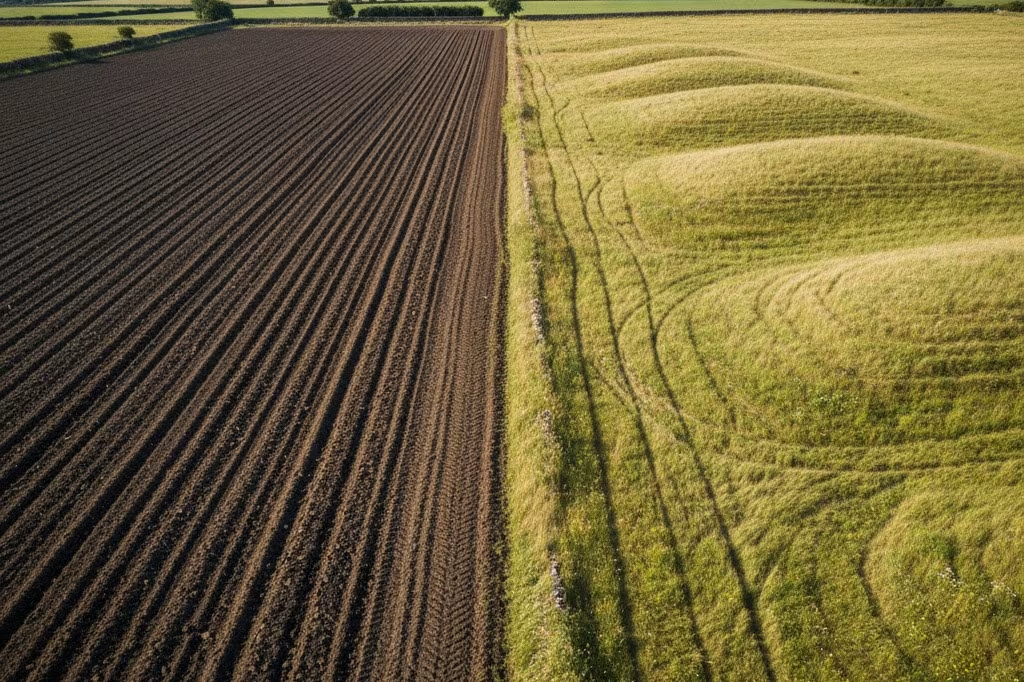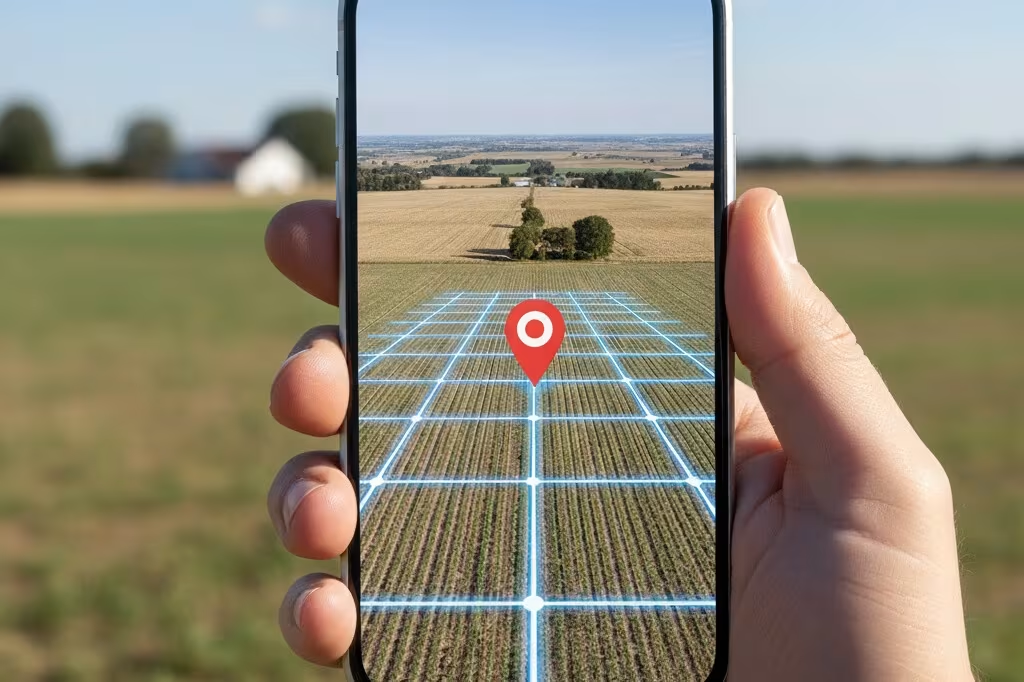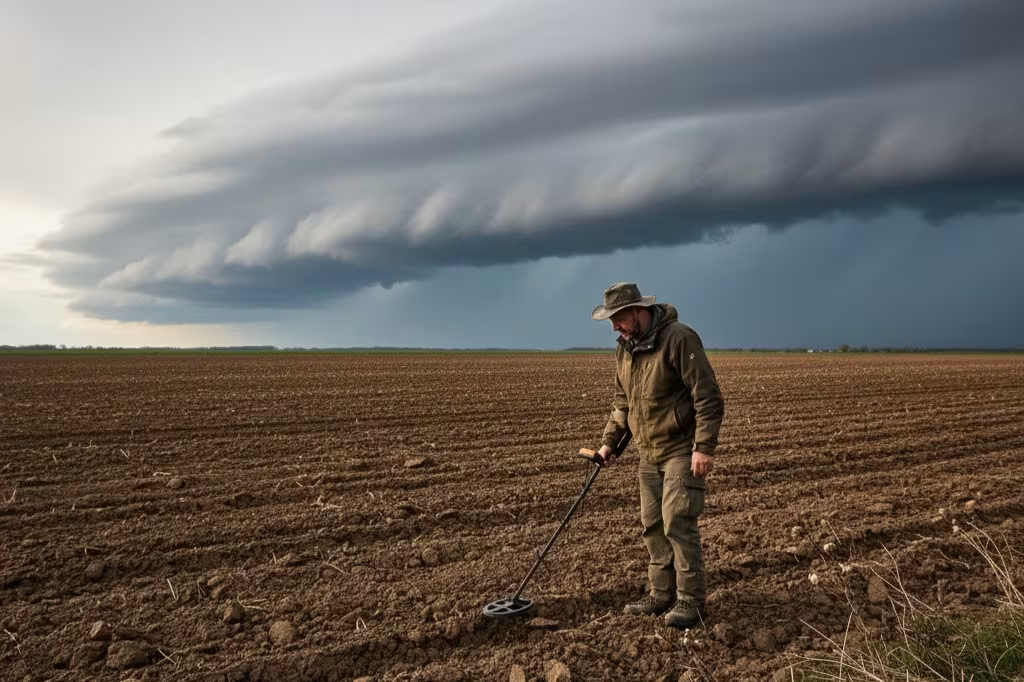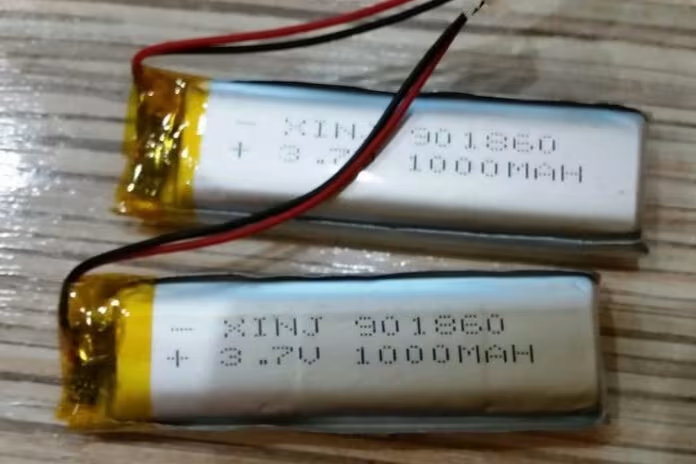- Farm Field Metal Detecting: The Day Everything Changed
- Understanding the Plowzone: Where Farm Field Relics Live and Die
- How to Read Plow Lines for Metal Detecting Success
- Gridding Techniques for Metal Detecting: The Strategic Search Method
- Equipment That Actually Matters
- Pre-Hunt Research for Metal Detecting: The 3-to-1 Success Rule
- Best Timing for Farm Field Metal Detecting: Weather and Seasons
- Final Thoughts: Strategic Farm Field Hunting Changes Everything
- References
Farm Field Metal Detecting: The Day Everything Changed
Picture this: You just scored permission to hunt a 20-acre farm field. The farmer says there was an old homestead here in the 1800s. You’re pumped. You fire up your detector and hunt for three hours.
Your finds? One rusty nail. Two can tabs.
Sound familiar? Yeah, I’ve been there too.
Here’s what nobody tells you when you start metal detecting. Farm field success isn’t about luck. It’s about strategy. I learned this lesson the hard way.
My buddy Tom invited me to hunt a field he’d researched for weeks. Tom’s the guy who actually reads detector manuals for fun. While I wandered around randomly for two hours finding junk, Tom gridded one small section. He pulled 18 period coins, buttons, and relics.
Same field. Same day. Totally different results.
What was Tom’s secret? He knew how to read plow lines. He used systematic gridding. And here’s the kicker – field tests show these techniques can boost your target recovery by 250-375% compared to random searching.
That’s not a typo. You can find three times more stuff. You just need to hunt smarter, not harder.
Let me show you how.
Understanding the Plowzone: Where Farm Field Relics Live and Die
Think of the plowzone as your hunting ground. It’s that 6-12 inch layer farmers turn over every year. But here’s the weird part. It’s both preserving history and destroying it at the same time.
Scientists studied Anglo-Saxon artifacts from plowed fields. They found something surprising. Most damage happens after items enter the plowzone, not before. That button you found? It was probably perfect 150 years ago. The plow’s been beating it up for decades.
What’s Actually Happening Underground
Moldboard plowing flips the soil completely. It goes 6-8 inches deep. This creates crazy vertical movement. Get this – coins on the surface today might have been 18 inches deep thirty years ago.
Think about that. The plow is like a really slow elevator bringing treasure up to you.
But it also shuffles things around horizontally. Your colonial kitchen stuff won’t migrate to the barn site. But it’ll definitely move around the kitchen area.
Chisel plowing goes deeper – 8-12 inches. But it doesn’t flip everything over. It’s more like a giant fork loosening the soil.
The Conservation Tillage Problem
Here’s something that’s changing everything for detectorists. Modern farming is going no-till. It’s great for the environment. Not so great for us.
When farmers stop flipping the soil, that treasure elevator stops running. No more deep artifacts coming up every year.
Once a field goes no-till, it’s locked. You’ll only find what’s already in the shallow zone. Nothing new coming up from below.
This creates urgency. Hunt fields with traditional tillage while you can.
How to Read Plow Lines for Metal Detecting Success

Those furrows aren’t just bumpy obstacles. They’re telling you a story. They’re showing you how to hunt more effectively.
Reading Plow Patterns: Modern vs Historical Field Patterns
Modern furrows are straight, wide, and evenly spaced. But here’s what gets exciting. When you spot narrow, curved, irregular “ridge and furrow” patterns, you’ve hit gold. That’s evidence of old farming. Maybe centuries of human activity.
I remember the first time I saw these curved patterns in an old pasture field. My heart started racing. I knew I was looking at something special. Turned out that field had been farmed since the 1600s. The finds that day? Incredible.
The Plow Line Direction Debate: Why Perpendicular Wins
Ask ten detectorists about plow line direction. You’ll start an argument. Trust me on this.
But experienced hunters agree – search across the furrows at 90 degrees.
Why? Your coil stays at a consistent height. It rides smoothly over ridges and dips into troughs. Try walking along a furrow. You’re constantly adjusting. Your swing gets shorter. You miss depth.
Here’s the rule: For every inch your coil lifts up, you lose an inch of depth.
Tom watched me struggle along a furrow for twenty minutes once. “You’re working three times harder and covering half the ground,” he said.
He was right. I switched to perpendicular searching. Instantly easier. More finds too.
Field Edge Effects: Finding Treasure at Plow Boundaries
See that roll of soil where the farmer turns the plow? Artifacts migrate there over decades. It creates a concentration zone right at the field edge. Might only be 6-10 inches high. But it can be loaded with targets.
Look for weird stuff too. Places where furrows converge or change direction. These often mark former buildings or obstacles. High ground with strange plow patterns? Probably an old foundation.
Last spring, I found a spot where the plow lines made a weird arc. Investigated and found brick fragments everywhere. Pulled 12 large cents from that 20-foot area. The foundation was right there under a foot of soil.
Gridding Techniques for Metal Detecting: The Strategic Search Method
Ready for some real talk? Random searching gives you maybe 40-60% coverage. Systematic grids? 95-98% coverage.
The difference shows up in your finds. I’ve seen it repeatedly. Same field. Same day. Gridders pull 3-4 times more targets than random hunters.
How to Grid a Farm Field: Parallel Line Basics
Start with parallel lines. Walk from one boundary to the opposite edge. Here’s where beginners mess up. You need overlap between passes.
Most newbies move one full coil width per pass. They think they’re covering everything. Wrong.
At maximum depth, your effective coverage narrows to just the coil center. Those “full width” passes leave massive gaps for deep targets.
Grid Sizes That Work:
- Small zones (homesites): 4×4 to 5×5 feet, 2-3 foot spacing
- Medium fields (1-3 acres): 6×6 to 8×8 feet, 3-4 foot spacing
- Large fields (10+ acres): 10×10 feet, 4-6 foot spacing
I usually start with 6×6 grids for most hunting situations. Tight enough to catch good targets. Not so tight I’m wasting time on empty ground.
The Crosshatch Method: Multi-Directional Search Patterns
Tom taught me something that changed my hunting forever. Some targets won’t make a sound from one direction. But they’ll scream from another.
Target orientation in soil matters. Shape matters. Nearby iron matters. It all creates directional bias.
Crosshatch coverage means detecting the entire area one way. Then covering it perpendicular to your first passes. Yes, it takes twice as long. But on good sites? Totally worth it.
I hunted a homesite last fall that had been hit hard by other detectorists. Lots of old holes. I decided to run perpendicular passes between all those holes. Pulled seven more coins and three buttons they’d missed.
Experienced hunters say searching between previous holes is “very rewarding in 99.9% of cases.” I believe it.
Real-World Gridding Strategy: Tom’s Proven System
Here’s what actually works in the field:
- 10% time: Random scouting for hotspots
- 60% time: Systematic gridding on good areas
- 20% time: Perpendicular passes on productive zones
- 10% time: Cleanup at odd angles on dense spots
You’re not wasting time gridding empty ground. You’re maximizing good zones. Smart hunting means knowing when to grid and when to move on.
GPS Apps for Metal Detecting: Modern Grid Navigation

Apps like LuckyFind and Maprika changed the game. No more physical markers. Plan virtual grids on your computer. Overlay them on satellite images. Navigate precise lines with GPS.
High-end detectors like the Minelab Equinox series have built-in GPS. You can log finds with photos and coordinates.
The catch? Battery dependency. Satellite reception can be spotty in some areas. Always carry backup batteries and paper maps.
I learned this lesson hunting a remote field last year. Phone died at 30% battery. GPS app went with it. Spent an hour trying to figure out what sections I’d already covered. Now? Backup battery pack lives in my detecting bag.
Equipment That Actually Matters
VLF or PI? Here’s How to Decide
Your detector technology makes a huge difference. VLF (Very Low Frequency) detectors filter out iron trash. That’s crucial around old homesites. PI (Pulse Induction) detectors go deeper and handle mineralized soil better. But they can’t discriminate well.
The decision is simple. Low to moderate soil mineralization? Modern multi-frequency VLF wins. Heavy red clay “hot ground”? You need PI or you’ll fight constant false signals.
I hunt mostly in red clay country. My VLF machine was going crazy with ground noise. Constant chatter. False signals everywhere. Switched to a PI detector. Night and day difference. Suddenly I could hear targets again.
Search Coil Selection for Farm Fields: Size and Type Guide
DD (Double-D) coils are farm field champions. They handle ground mineralization way better than concentric coils. They separate targets better in iron-heavy areas too.
Size Trade-offs:
- Large coils (11″+): Max depth and coverage, poor separation
- Small coils (5-8″): Great separation near iron, less depth
- Medium coils (9-11″): Best all-around balance
Settings for Farm Fields:
- Sensitivity: 70-80% max without chatter
- Ground balance: Manual, adjust as soil changes
- Fast recovery speed for iron areas
- Low discrimination at first
Iron concentrations often mark the homesite center. Don’t discriminate them out. Those annoying iron signals? They’re breadcrumbs leading you to the good stuff.
Pre-Hunt Research for Metal Detecting: The 3-to-1 Success Rule
Here’s the secret top farm field hunters know. Spend three hours researching for every one hour detecting.
Random hunting rarely works in American farm fields. You need to find specific former activity spots.
Your Research Toolkit:
- Historical plat maps from the 1870s or earlier
- Aerial photos from 1947+ showing old structures
- Apps like Maprika for overlaying historical maps
- Surface clues: brick pieces, pottery, glass, square nails
Tom spends winter evenings researching. By spring, he knows exactly where the homestead was. Where the barn sat. Where the wagon trail ran.
That’s not luck. That’s strategy.
I spent a whole Sunday afternoon at the county historical society once. Found an 1875 plat map showing three homesites in fields I had permission to hunt. Nobody had lived there since the 1920s. The sites were completely invisible on the surface. But that map gave me exact locations.
Those three sites produced over 200 coins and relics that season. Best research day ever.
Best Timing for Farm Field Metal Detecting: Weather and Seasons

Hunt fields right after rain when possible. Rain cleans artifacts. They’re easier to spot on the surface. Moist soil conducts better too. Deeper signals become clearer.
But wait a day or two if it’s really muddy. You don’t want to damage the field. Farmers remember that stuff. One detectorist leaving boot-sucking ruts can ruin access for everyone.
Spring offers the best window – that 2-4 weeks between final plowing and planting. Fall works great too, after harvest. You get more time to work fields in fall. Less pressure than spring’s narrow planting window.
Final Thoughts: Strategic Farm Field Hunting Changes Everything
That first hunt with Tom changed everything for me. I stopped wandering. I started hunting strategically. My find rate tripled in a month.
The plow is weird. It’s a discovery tool and a destruction machine. It brings history within reach while destroying it at the same time.
Understanding plow zones helps. Reading plow lines helps more. Systematic gridding with proper overlap? That’s where the magic happens.
Remember something important. Fields under traditional tillage have a finite window. Conservation methods are locking assemblages down. The artifacts in plowzones get damaged every year.
Systematic recovery isn’t just treasure hunting. It’s preservation.
Now you know how to grid a farm field. You know how to read plow lines. You know the best way to hunt effectively.
Get out there. Do your research. Plan your grids. Hunt smart.
Those fields are waiting for you.
Happy hunting! 🔍
References
- Haldenby, D. & Richards, J.D. (2016). Charting the effects of plough damage using metal-detected assemblages. Internet Archaeology, 42. https://www.researchgate.net/publication/279680538_Charting_the_effects_of_plough_damage_using_metal-detected_assemblages
- Iowa State University Extension. Frequent Tillage and Its Impact on Soil Quality. https://crops.extension.iastate.edu/encyclopedia/frequent-tillage-and-its-impact-soil-quality
- Friendly Metal Detecting Forum. Grid Detecting. https://metaldetectingforum.com/index.php?threads/grid-detecting.172850/
- Gigaparts. The Science of Search Patterns: Optimizing Your Metal Detecting Strategy. https://connect.gigaparts.com/t/the-science-of-search-patterns-optimizing-your-metal-detecting-strategy/1554
- Serious Detecting. Pulse Induction and VLF: Finding the Right Tool For the Job. https://seriousdetecting.com/blogs/detecting-prospecting/pulse-induction-and-vlf-finding-the-right-tool-for-the-job
- Minelab. Understanding Minelab Coils: A Comprehensive Guide. https://www.minelab.com/blog/article/a-crash-course-in-everything-coils
- Library of Congress. Historical Maps Collections. https://www.loc.gov
- USGS. EarthExplorer – Aerial Photography Database. https://earthexplorer.usgs.gov
- Friendly Metal Detecting Forum. Advice on hunting plowed or cut fields. https://metaldetectingforum.com/index.php?threads/advice-on-hunting-plowed-or-cut-fields.129332/

My name is Paul and I am the founder of Detector For Metal, a dedicated resource for metal detecting enthusiasts seeking to uncover historical treasures and connect with the past using the latest technology. As a stay-at-home dad and family man, I’ve found metal detecting to be the perfect hobby that combines family adventure with historical learnings for the whole family.
As a father, I’m deeply committed to passing on this hobby to the next generation of detectorists, starting with my own children. I share advice on everything from metal detecting with kids to exploring the top 10 metal detecting sites you never thought about. My methodical approach to the hobby goes beyond the thrill of discovery—it’s about creating family traditions while preserving history and sharing the stories of those who came before us.


